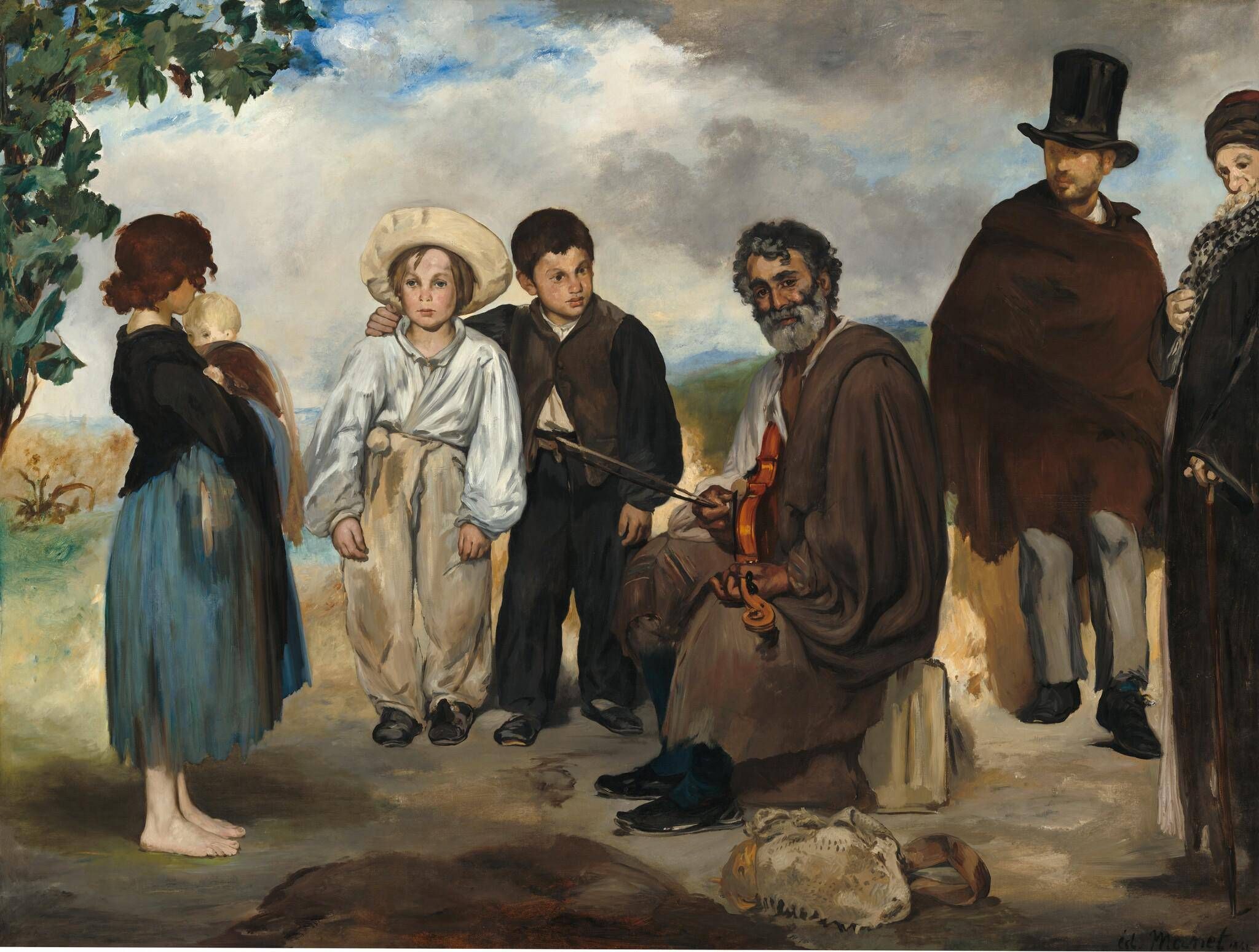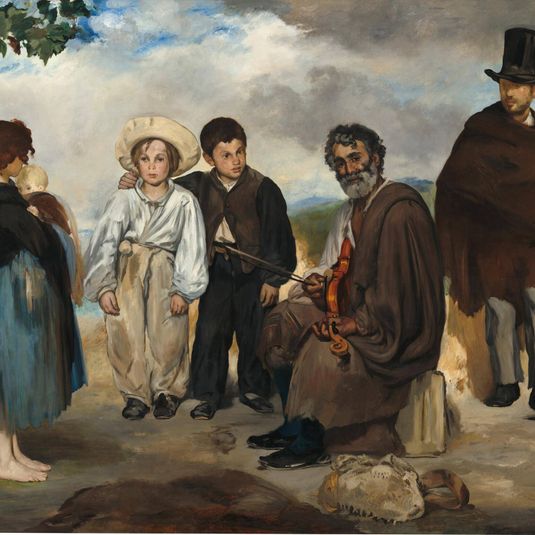
The Old Musician
In a review of the 1846 Salon, poet and critic Charles Baudelaire urged artists to depict "the heroism of modern life." Manet embodied Baudelaire's ideal painter of contemporary Paris. Emperor Napoleon III ordered the renovation of Paris under the direction of Baron Haussmann, and early in the 1860s the slum where Manet located his studio was being razed to accommodate the planned broad, tree–lined boulevards that still characterize the city.
In this painting, Manet represented a strolling musician flanked by a gypsy girl and infant, an acrobat, an urchin, a drunkard, and a ragpicker—individuals the artist might have observed near his studio. The seemingly casual gathering is composed of the urban poor, possibly dispossessed by Haussmann’s projects. Neither anecdotal nor sentimental, Manet’s portrayal carries the careful neutrality of an unbiased onlooker, and this distinctly modern ambiguity and detachment are characteristic of all Manet's work.
By placing pigments side by side rather than blending tones, Manet could preserve the immediacy and directness of preliminary oil studies in his finished works. Effects produced by this technique were sharper and crisper than those obtained using academic methods. When they first encountered Manet's work early in the 1860s, Monet and Renoir admired his manner of painting and emulated it as they forged the style known as impressionism.
Credit: Chester Dale Collection
1862
Oil on canvas
187.4 x 248.2 cm
1963.10.162
Image and text © National Gallery of Art, 2020
Where you'll find this

National Gallery of Art
Permanent collection
Discover more

The Old Musician by Edouard Manet
Art through the ages at the National Gallery of Art
•
1:21





